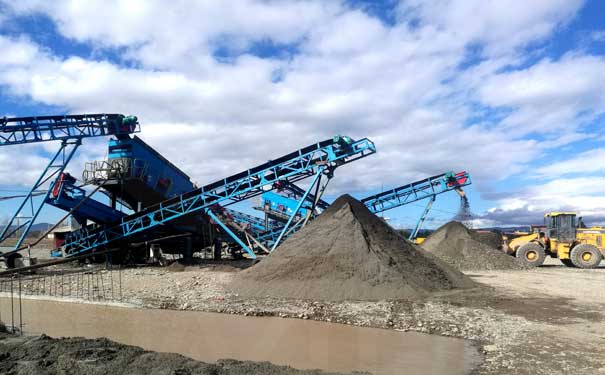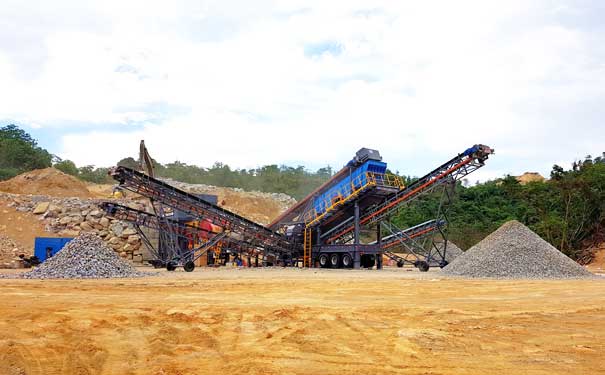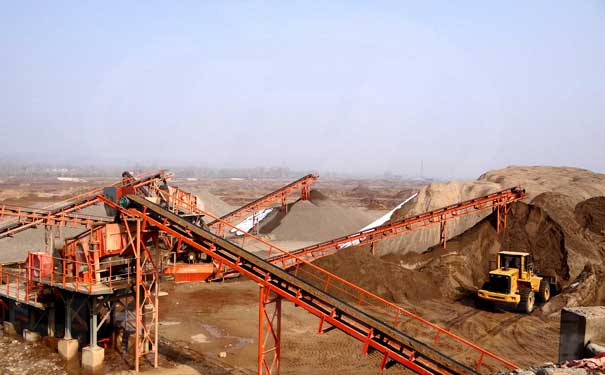Sand and gravel aggregate is a general term for materials such as sand, pebble (gravel) stone, crushed stone, block stone, and aggregate in water conservancy projects. Sand and gravel aggregates are the main building materials for concrete and masonry structures in water conservancy projects, and have important applications in the production of cement concrete, asphalt concrete, road foundations, railway ballast, and mortar. Sand and gravel aggregate is also one of the indispensable raw materials in infrastructure construction. Sand and gravel aggregate will be needed in projects such as housing construction, road and bridge construction, and construction of hydropower facilities. The classification of sand and gravel aggregates can be divided according to their aggregate particle size, aggregate density and source:
1. Source of sand and gravel aggregate
According to the source of sand and gravel aggregates, sand and gravel aggregates can be divided into natural rock aggregates, recycled aggregates, and artificial aggregates. Natural rock aggregates refer to aggregates composed of natural rocks, including crushed stones, pebbles, sand, etc.; recycled aggregates refer to broken concrete, broken bricks, etc.; artificial aggregates include machine-made sand, expanded shale, slag, and powder slag etc.
2. Particle size of sand and gravel aggregate
According to the particle size, it can be divided into coarse aggregate and fine aggregate. Coarse aggregate refers to gravel particles with a particle size greater than 4.75mm, such as gravel, river pebbles, pebbles, etc.; fine aggregate has a particle size less than 4.75 mm gravel particles, such as river sand, sea sand, etc.
3. Sand and gravel aggregate density
According to the density, it can be divided into three types: heavy aggregate, light aggregate, and ordinary aggregate. The density of heavy aggregate is between 3500~4000kg/m³, such as iron ore; the density of light aggregate is between 0~1000kg/m³ , such as ceramsite, expanded perlite, etc.; the density of ordinary aggregate is between 2500~2700kg/m³.
Through the above introduction, you can understand the concept and classification of sand and gravel aggregates. These types of aggregates need to be mined and processed. Generally speaking, the mining equipment used mainly includes crushers, sand making machines, etc., these different the equipment constitutes a complete production line to complete the processing of sand and gravel. Generally speaking, sand and gravel aggregate production lines are mainly divided into fixed gravel aggregate production lines and mobile gravel aggregate production lines.
Fixed gravel aggregate production line: feeder + jaw crusher + impact crusher/cone crusher + sand making machine + sand washing machine + vibrating screen + belt conveyor + centralized electronic control composition, which requires a fixed site requires ground piles and cannot be moved. Such a stone production line has a high output (the output can be dozens to thousands of tons per hour), but it is not adaptable to the site and cannot be moved back and forth. Of course, this is also suitable for those stone processing sites that are close to the raw materials, the supply of raw materials is large and continuous, the output requirements are high, and the production area is large.
Mobile gravel aggregate production line: The mobile stone aggregate production line is a combination of several equipment on a car, and is divided into fully automatic mobile crushing station and semi-automatic mobile crushing station. The main equipment is basically the same as the fixed one, and the mobile jaw crusher + mobile impact crusher / mobile cone crusher + mobile sand making machine + mobile screening machine + belt conveyor, equivalent to a complete stone production line, without the need for piles, can be directly driven to the work site. The installation is simple and quick, can be freely transferred, has strong adaptability to the site, dual-purpose oil and electricity, high degree of automation, and can be used in remote mountainous areas with insufficient power supply.




